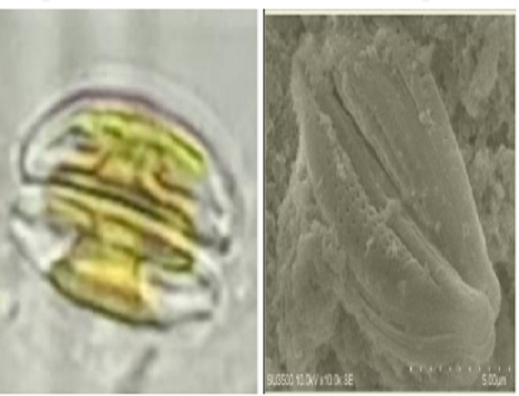Bioethanol Production From Tropical Marine Microalgae Ambon Bay Navicula sp. of The Inner Ambon Bay Strain
Abstract
Microalgae are photosynthetic microorganisms that contain carbohydrates can be converted into glucose through a hydrolysis process so that they can be used as raw materials for bioethanol production. Navicula sp. strain TAD is a type of marine microalgae that is spread in the inner Ambon Bay (TAD) sea waters and is used to manufacture bioethanol. This study aims to determine the content of carbohydrates and bioethanol produced from tropical marine microalgae Ambon bay Navicula sp. strain TAD. The research was conducted through several stages, namely the cultivation of Navicula sp. strain TAD to obtain biomass, determine carbohydrate content in biomass, hydrolyze biomass and manufacture bioethanol through a fermentation process using Saccharomyces cerevisiae. The results showed that Navicula sp. strain TAD cultivation for seven days had the highest cell density of 72.167 × 105 ± 0.946 cells mL-1 with dry biomass of 0.933 ± 0.062 g and productivity of 0.166 ± 0.011 gL-1 hour-1. The sulfuric acid hydrolysis process was analyzed for a sugar content of 146.5695 ± 0.758 mg. A fermentation process follows the results of the hydrolysis to produce bioethanol. The bioethanol content obtained was 6.357%. These indicated that Navicula sp. strain TAD has the potential to produce bioethanol
Downloads

Authors who publish with this journal agree to the following terms:
- Copyright on any article is retained by the author(s).
- The author grants the journal, the right of first publication with the work simultaneously licensed under a Creative Commons Attribution License that allows others to share the work with an acknowledgment of the work’s authorship and initial publication in this journal.
- Authors are able to enter into separate, additional contractual arrangements for the non-exclusive distribution of the journal’s published version of the work (e.g., post it to an institutional repository or publish it in a book), with an acknowledgment of its initial publication in this journal.
- Authors are permitted and encouraged to post their work online (e.g., in institutional repositories or on their website) prior to and during the submission process, as it can lead to productive exchanges, as well as earlier and greater citation of published work.
- The article and any associated published material is distributed under the Creative Commons Attribution-NonCommercial-NoDerivatives 4.0 International License.





_copy1.png)










